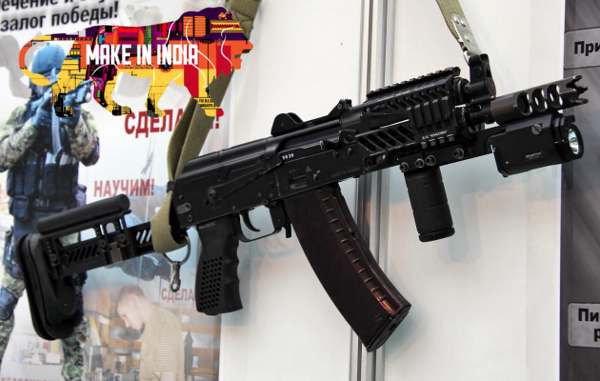In March 2019, India’s Prime Minister Narendra Modi unveiled an Indo-Russian joint venture formed with an objective to manufacture an assault rifle. Code-named AK-203, the gun has been designed by the Kalashnikov Concern and is thus one of the new generations of the AK family, the descendants of the famed AK-47. Press reports declare that as many as 750,000 rifles are to be produced this way, a vast majority of which are to be provided to the Indian Armed Forces. If these numbers are correct, the AK-203 is poised to become one of the main weapons of the Indian Army.
Its introduction will allow New Delhi to phase out its own rifle, the INSAS. The troubles with this indigenous gun are indicative of the larger woes of the Indian defense industry. INSAS was found to be an unreliable firearm, and in 2017 it was decided that it needs to be withdrawn. As if admitting that it is unable to produce the next-generation assault rifle on its own just yet, India decided instead to manufacture it jointly with the Russians.
The production of this rifle is to take place in India under Indo-Russia Rifles Private Limited. 50.5 percent of its stakes will belong to the Indian Ordnance Factory Board, and the remainder to Russian entities: Rosoboronexport (7.5 percent) and Kalashnikov Concern (42 percent; the concern in turn belongs to the Russian defense giant Rostec). This makes the joint venture a collaboration of public firms.
Knowing his PR skills, Narendra Modi is sure to turn a technological failure of INSAS into a political success in the AK-203. The Indo-Russian project is being showcased as a part of Make in India, one of the Indian government’s most important campaigns. An initiative unveiled in 2014, Make in India is aimed at bringing more FDI to the country and enhancing production domestically thanks to the engagement of foreign companies. The political narrative around the Indo-Russian project will certainly focus on how it will enhance production, not on the import of technology.
The project bears some political significance on the international level as well, as it shows that despite growing cooperation with the United States, New Delhi does want to retain many aspects of its defense ties with Russia. The joint manufacturing of the AK-203 is arguably not the strongest card in the set here, however. The number of rifles to be produced is huge, but in both economic and technological terms, this joint venture is not a game-changer by any standards. The case of the S-400 surface-to-air missile system would be a much better example here.
But, just like with S-400, the AK-203 deal does not indicate that India is taking one side of the global order. In 2019, the BJP government also inked a deal with the German company SIG Sauer to purchase 72,400 SIG716 rifles. Both the SIG716 and AK-203 are to replace the INSAS, but it is the former that is to be used by the Indian Army on the frontline (as reported by Snehesh Alex Philip for the Print). Thus, while the Russian rifle will be used more widely in the Indian Armed Forces, it is the Western gun that is to serve a more prominent and significant role. This comparison is perhaps one of the symbols of the current state of defense cooperation between New Delhi and Moscow.
Ref: The Diplomat
Image Courtesy: National Interest
You may also like
-
IAF Aircraft Set Course For Exercise Eastern Bridge VII At Oman
-
IAF Set To Host The Indian Defence Aviation Exposition-II At Jodhpur
-
Defence Secretary to co-chair 5th India-Philippines Joint Defence Cooperation Committee meeting in Manila
-
Simultaneous Launch Of ‘malpe And Mulki’, Fourth And Fifth Ships Of Asw Swc (Csl) Project
-
Aatmanirbharta in Defence: MoD signs Contract with HAL for 240 AL-31FP Aero Engines for Su-30MKI Aircraft
